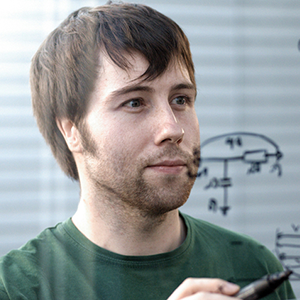Organ-on-a-chip systems are a promising tool for drug screening and pre-clinical testing. By reproducing core functionalities of living organs on a microfluidic platform, these microphysiological systems are expected to reduce future animal testing. The fellows work on the development of miniaturized pancreas and liver models, as well as embryo-like structures.
Cécile Echalier

Country of origin: France
Host: Stefan Krauss
Group: Hybrid Technology Hub - Centre of Excellence
Thematic area: Microphysiological systems
Project title: Organ-on-a-chip: Development of an integrated pancreas-on-a-chip.
My project
Insulin is a hormone produced by the pancreas to control blood sugar levels. Diabetes occurs when the body does not produce enough insulin or does not respond effectively to insulin. With over 422 million people with diabetes worldwide, there is an urgent need for prevention and improved treatment.
The development of a miniaturized pancreas model, called “pancreas-on-a-chip”, would provide insight into this disease and would help to identify drugs to regulate insulin levels in the body. I am working at the development of a pancreas-on-a-chip by engineering a real-time insulin sensor and a biomaterial suitable for long-term preservation of insulin-producing islets.
Håkon Høgset

Country of origin: Norway
Host: Stefan Krauss
Group: Hybrid Technology Hub
Thematic area: Microphysiological systems
Project title: Improve stem cell derived organ models through developmental induction and cell self-organisation.
My project
In this project we will use the latest advancements in stem cell technology and harness the remarkable ability of embryonic stem cells to self-organise during early development to improve the spatial arrangements of organ models. Moreover, the project will focus on developing novel methodologies to directly assess and control cell differentiations during early organ development.
This project aims to create improved human organ models for use in drug testing, personalized medicine and for regenerative medicine and organ replacement. This can contribute reduce the costs of drug development, increase the accuracy of drug testing and provide future tools for organ repair and replacement.
Mathias Busek

Country of origin: Germany
Host: Prof. Stefan Krauss
Group: Hybrid Technology Hub - Centre of Excellence
Thematic area: Organ-on-a-Chip
Project title: Research Development and Validation of a Bio-printed Liver-on-a-Chip with integrated Vasculature.
My project
The liver is a key organ responsible for metabolism, detoxification and protein production. Developing an in-vitro model is therefore of interest when drug response and disease conditions should be studied in animal-free models. Emerging technologies like microfabrication and tissue engineering promise the possibility to rebuild functional tissue ex vivo in an Organ-on-a-Chip system.
A major challenge in developing a Liver-on-a-Chip is the complex morphology and the different functional areas of the liver. This project aims to combine different microfabrication technologies and the advanced cell culture knowhow at HTH to develop and validate an in-vivo like model of the liver.
Sergei Ponomartcev

Country of origin: Russia
Host: Stefan Krauss
Group: Hybrid Technology Hub - Center of Excellence
Thematic area: Organ-on-a-chip, organoids, gasrtuloids
Project title: Trajectory towards in vitro organogenesis through mouse lineage restricted embryonic inductoids
My project
There is a significant unmet need to develop faithful 3D human biological organ representations “organoids” for personalized drug studies and on a longer time perspective for organ transplantation. There has been considerable progress in organoid development in the last decade; however, current organoids only fragmentary represent the complexity of a mature organ. The field is exploring methods to achieve organoid development using the spatio-temporal context of gastruloids (embryo like structures). The aim of the proposed work is to develop – as a proof of concept - next generation mouse gastruloids that reach a stage where endodermal organs develop.
The technology may in future be used for growing vascularized and histologically structured human organ representations while overcoming serious ethical issues. These structures can be used in drug tests and in a future as a source of material for tissue replacement.